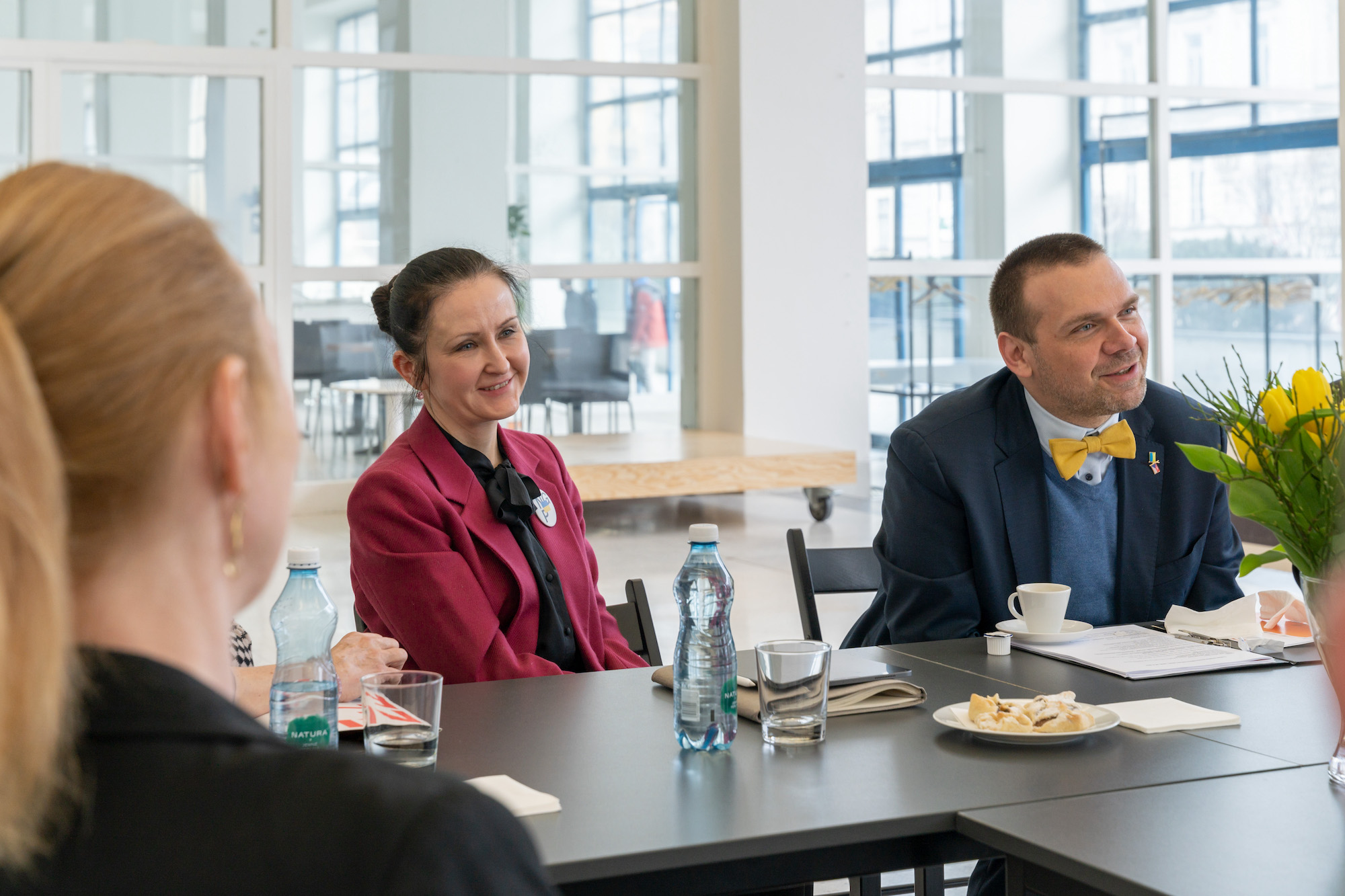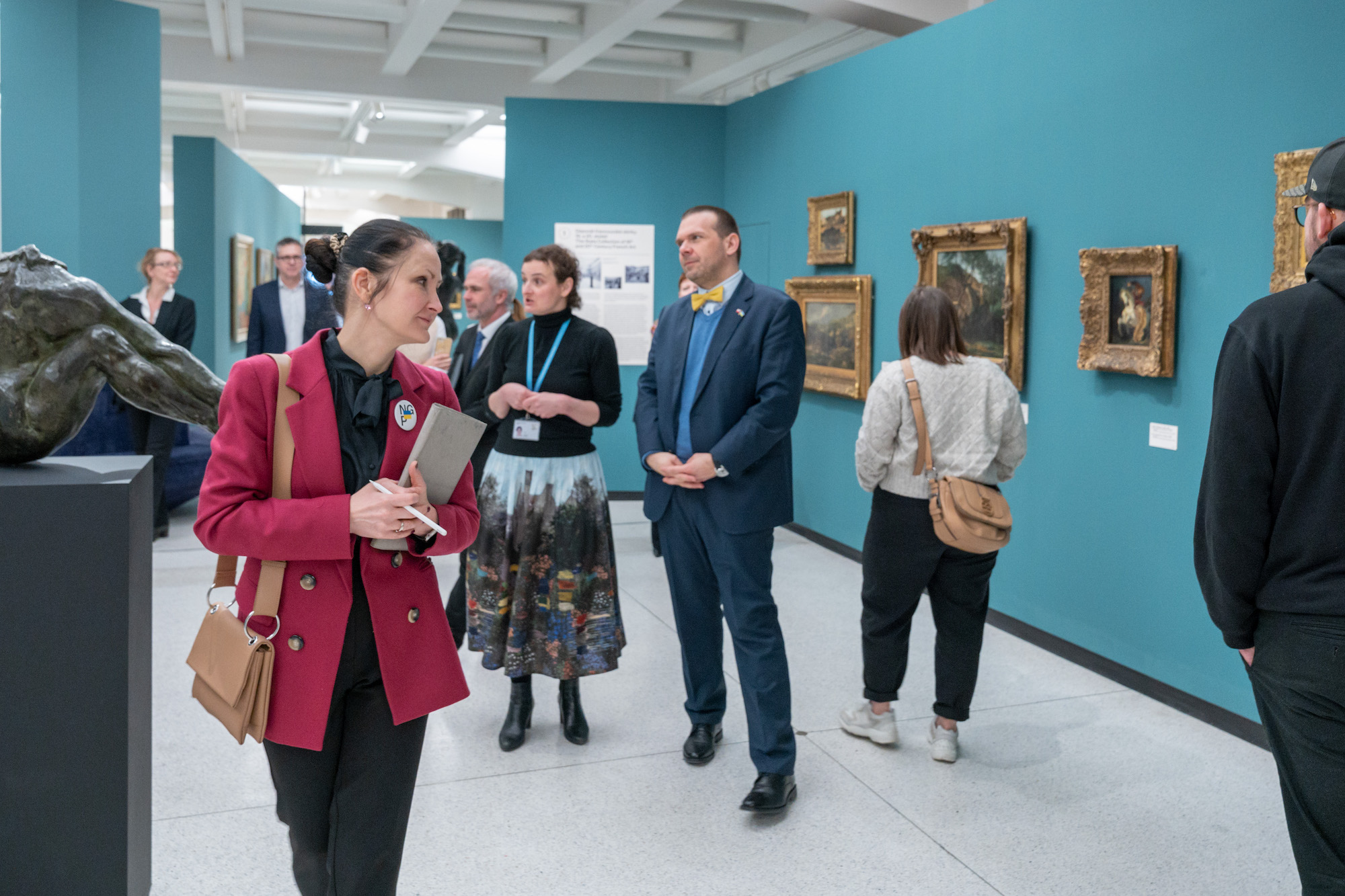“The sky is the limit”

Text: Martina Hošková and M. Zisso, Photo: Jakub Přecechtěl and Zuzana Bönisch
The National Gallery Prague has the largest collection of art in the Czech Republic, presented in eleven different buildings in the city and beyond. The most interesting works are available online too, thus contributing to the ever-growing accessibility of the collections. Since 2021, the prestigious position of the Gallery’s general director belongs to Alicja Knast, a culture manager from Poland. She told us about her professional dreams, interdisciplinary approach in culture, and National Gallery investment plans for the next five years. As she puts it, “In terms of inventing or reinventing an institution, the sky is the limit.”
It has been a year since you arrived in the Czech Republic. Can you share your impressions with us?
I am constantly being deeply impressed by the way the Czech people feel and communicate about their country’s culture and heritage. The quality of the public media has also made quite an impression. Unfortunately, that would not be a positive comparison for Poland, the country I was born in. Cultivation of proper discussion and juxtaposing different opinions and perspectives sounds like a banal observation, but that is a cornerstone of fostering critical thinking amongst viewers and listeners.

What were the steps that brought you to the post of the general director of the National Gallery Prague and how do you enjoy the work?
I have always dreamt about being able to organize a museum in the way I strongly believe in: open and accessible for all. So far, I succeeded in Poland in various set ups, and I did want to try in a different legal environment. The Czech Republic was an ideal choice. Very far in terms of the cultural heritage dating until 1918, but very close after that to the Polish. I might perhaps mention that I was approached by a head-hunter around the time I was about to start my post in Prague to consider another position in Western Europe. However, I did not follow that path.
In this dynamic, fluid world galleries and museums also have to be more adaptive. The sky is the limit in terms of inventing or reinventing an institution. It requires a good recurrent diagnosis of the needs of the given audience so that you do not fall into a routine of purely fulfilling the expectations. The most challenging part of being the general director of the National Gallery Prague is making sure I am present in all NGP locations to be able to see the team members in their own work environment and support them in a way they deserve.

You have a background in musicology – can we expect more exhibitions focusing on music?
Actually, I have never been a regular musicologist in my life. I was interested in the connection between visual arts and their influence on composers in choosing a type of timbre, psychoacoustics, and musical cognition, but above all in the art of making musical instruments. During my work at the University of Plymouth, I have closely encountered neuroscientists working on vision and gesture and it turned into a mind-opening experience showing me that we are whole as human beings. The divisions between visual arts, music, and movement are blurred, although present in Western culture since the very beginning of the reflection on human activity and capacity. It was only strengthened during the Enlightenment, but today we know that it is not how we, humans, are creative. I am a student of the late prof Jan Stęszewski who fostered interdisciplinary approaches in students. I do not think that we will make more music-related exhibitions. Besides, the role of the director is to inspire and facilitate, and not make specific exhibitions, so at the end of the day, it is a curator ́s drive and passion that is important, not the director’s.
What do you envision for the National Gallery Prague in the next five years of your leadership?
The National Gallery was not fortunate to have a purpose- built space. Even though we have 33,000 sq m exhibition space in total, nothing that belongs to NGP really fulfils the needs of a contemporary gallery or museum. I am focusing on several investment plans, namely Jinonice depository, Trade Fair Palace reconstruction, and digital transformation of the entire institution. I am working with the team on one coherent project where all the three components will have financing and prospect for realization. In the area of programming, we are very intensively working on accessibility to our program and facilities. By that, I do not mean accessibility for people with disabilities. We understand accessibility in a broader sense since the pandemic showed us that digital content is very much needed and expected. There is no way back from that.
Our five-year strategy is now waiting for approval from the Czech Republic Ministry of Culture.

You were a plenipotentiary and then general director of the permanent exhibition of the Museum of the History of Polish Jews. Prague has a long history of Jewish people and communities, are you planning to put together such an exhibition here?
Actually, the effort to bring back the memory of the presence of the Jews in the entire Polish history and to foster understating of this presence was very urgently needed. Before establishing POLIN in 2004, Polish heritage institutions were very much focused on the Holocaust, but it was only the result of the fact that during WWII the death camps were built on Polish territory. In the Czech Republic, the situation is different. The aspects of Jewish life, culture, and events of WWII are all well present in the public domain, so unlike in Poland, that would be perhaps unnecessary to establish this kind of an exhibition here. Also, art history is driven rather by phenomena, not based on ethnicity.
Is there any time left for any free-time adventures in the life of the National Gallery Prague director?
Of course… my ongoing adventure is learning Czech. I simply love the sound of the Czech language. My dream is to truly learn this language to have a better understating of where I work and live. I am quite fascinated by the etymology of Czech words too. Besides that, I work on completing my PhD studies at the London Metropolitan University. I also happen to have a very bad habit of reading too many books at the same time, depending on my switching interests or work needs or inspirations I just had.

